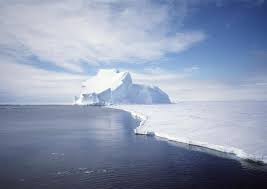 Climate change is likely one of the reasons for changing sea life under the Antarctic ice shelf according to researchers. Scientists have been diving the Antarctic Ross Ice Shelf and discovered that the ecosystem on the seafloor has changed with the cause primarily being the ice shelf becoming thin due to climate change and warming.
Climate change is likely one of the reasons for changing sea life under the Antarctic ice shelf according to researchers. Scientists have been diving the Antarctic Ross Ice Shelf and discovered that the ecosystem on the seafloor has changed with the cause primarily being the ice shelf becoming thin due to climate change and warming.
These changes have occurred over a relatively short time period according to Patrick Degerman from Finland who is also on the research team. Two researchers took a dive to the bottom of the sea and noticed that remarkable changes have occurred since the last dive in 2009. The members of the dive team have been posting pictures from above and below water during their exploration on their Facebook page.
The dives show that changes can occur rapidly, even in the Antarctic region where the low temperatures tend to slow things down. The sea floor is typically dark and doesn’t have the biological material that is common in other parts of the ocean. The dive sites only go down 66 feet, but the conditions mimic areas that are much deeper with a lack of animal life. The majority of what researchers found included sea stars, sea cucumbers, and deep-sea sponges that are usually only found in the deeper waters. They’ve become a common sight now.
Researchers for the program are on a six-week trip and staying at the Ross Ice Shelf. The sites have been explored before to give the researchers a metric to compare the current findings to. The primary goal of the expedition has been to see how climate changes affect biodiversity in Antarctica.
The current thoughts are that the melting ice allows light to pass through to the lower depths of the ocean. Some ice occasionally weakens and breaks off. It’s possible for the ice to accumulate to 15 feet where light cannot penetrate the surface. The ice is currently measuring at about ten feet thick and allowing the ecosystem to expand in diversity. The entire experience is also being documented using 360-degree video cameras to capture the sights of virtual reality and will be available in the early part of 2018.
Climate change also has the potential to increase the amount of food on the seafloor available to animals. More algae will grow under the ice penetrated by light and feed the sea life with more information becoming known as explorations continue.











